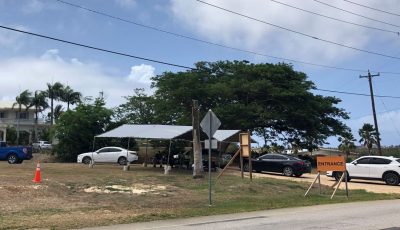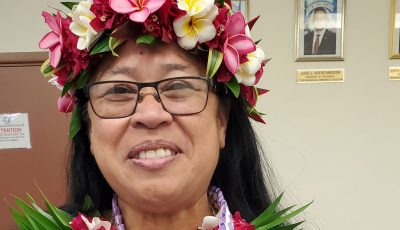REDISCOVERING THE PHILIPPINES
Dining in unforgettable settings
First part of a series
MANILA, Philippines—From feasting on sumptuous lunch buffets at the foot of a waterfalls in the middle of a coconut plantation to driving your appetite aboard a jeepney, unique culinary experiences in the Philippines need not be confined to traditional restaurant settings.
- At Gerry’s Jeepney, guests are treated to superb picnic-type Filipino cuisine aboard iconic jeepneys. (Haidee V. Eugenio)
- The Nook Cafe and Books is so far the only Harry Potter-inspired coffee shop in the Philippines. (Haidee V. Eugenio)
- You can dine aboard this highly decorated jeepney at Gerry’s Jeepney. (Haidee V. Eugenio)
- Once you step inside The Nook Cafe and Books along Maginhawa Street, this will be one of the Harry Potter-inspired decors that will greet you. (Haidee V. Eugenio)
- The Nook Cafe and Books is so far the only Harry Potter-inspired coffee shop in the Philippines. (Haidee V. Eugenio)
- The only one of its kind, Villa Escudero Plantations and Resort’s waterfall restaurant is consistently ranked among the world’s most unique, most unusual and most interesting restaurants. (Haidee V. Eugenio)
- You may choose to go bamboo rafting in the river at Villa Escudero Plantations and Resort. (Haidee V. Eugenio)
- A Philippine folk dance performance by Villa Escudero Plantations and Resort’s very own employees, from restaurant servers to groundskeepers. (Haidee V. Eugenio)
- The interior of an artsy restaurant and bar called WUMS or When Uan Met Sally along Maginhawa Street. (Haidee V. Eugenio)
So when you’re in the Philippines for a vacation, medical tourism, or relocation, be prepared for awe-inspiring and heritage-laden twists to your dining and coffee drinking explorations.
Here’s just a sampling of interesting places within Manila and nearby places that will not only bring you gastronomical delights but will also take you on a journey through time, the countryside, around the globe, or even Harry Potter’s world.
Getting up close and personal with a waterfalls is in itself a wondrous experience. More so when you get to feast on authentic Filipino cuisine right at the foot of a roaring waterfalls, with clear spring water over your bare feet and sometimes live fish swimming around you. This lunch buffet-style waterfalls restaurant is the crown jewel of the sprawling Villa Escudero Plantations and Resort in San Pablo City, Laguna.
While it is not a natural waterfall but a spillover from a dam for a historic coconut plantation, Villa Escudero’s waterfalls restaurant remains the only one of its kind and is consistently included on the list of most unique, most exotic, or most interesting restaurants in the world. The plantation ground is framed by mountains, coconut trees, and lush greenery.
This restaurant with a watery treat serves delectable grilled and fried fish, grilled pork, other meat and vegetable dishes, pansit (noodles) and other exotic Filipino food arranged in grass-fringed bamboo tables. And of course, you can eat as much as you can.
You can totally soak yourself in the waterfalls just for the thrill of it, sit at the foot of it, or simply gaze at it for hours. Dining at the foot of a waterfalls is simply a unique memory that stays with you long after your trip.
It’s highly recommended that you visit the hacienda-type resort during weekends so you can watch beautifully choreographed Philippine folk dances and music at the main hall overlooking the river. They are performed by Villa Escudero’s very own employees, from the restaurant servers to groundskeepers.
Hop on a carabao cart ride from Villa Escudero’s main gate. As you slowly drive past lush gardens, war relics, statues depicting rural life of decades ago, and other points of interest, you will also be serenaded with kundiman and other folk songs by staff clad in traditional Filipino attire. The tranquil countryside or rural village scenery all year round transports you back in time as if it’s still in the late 1920s when the coconut plantation was originally built. It was opened to the public more than five decades later.
The bright pink church you see a few minutes from the main gate is actually a museum when you step inside. This museum has possibly the most eclectic collection of artifacts you’ll ever see—from Spanish-era religious relics to prehistoric jars, mounted animals, clothing by former Philippine presidents, money from different eras, and even a piece of the Berlin Wall. Nearby is the Escudero family’s ancestral house, which is closed off from the general public.
You may also choose to go fishing, bamboo rafting in the river, bird watching, swim in the pool, lounge by a coffee shop overlooking the river, or explore the other amenities at the hacienda-themed resort.
Everywhere you look, the views are breathtaking and awe-inspiring. For those who can’t get enough of the place, Villa Escudero offers overnight accommodations that include cottages by the river. With hammocks.
For yet another suggested item on your “eat-inerary,” turn your attention to not only a single restaurant but to a whole street dotted with themed, artsy, quirky, poetic, dramatic, and specialty restaurants, bars and cafés called Maginhawa Street in Quezon City.
Maginhawa Street is one of the latest and hippest “eat streets” in the country. It’s a one-stop place where you can eat, pray, love, and share. Students from nearby University of the Philippines, Ateneo de Manila University and Miriam College know the area well, but because the street’s reputation has grown, it has been drawing crowds from other parts of Metro Manila and beyond.
We wish we could have flown to our first stop at Maginhawa Street using a Firebolt racing broom to save ourselves from the traffic jam. Turns out, a Firebolt was already waiting for us, hanging by the ceiling of the Harry Potter-inspired The Nook Coffee and Books.
If you haven’t read about this place yet, the façade looks ordinary, just like the barrier between Platforms 9 and 10 at London’s King’s Cross Station that Harry Potter and other students go through to go to Hogwarts School of Witchcraft and Wizardry.
But if you take a closer look, the board outside says The Nook offers the Harry Potter-inspired Butterbeer, “the preferred drink of underaged wizards and witches.” The non-alcoholic beverage comes in Harry size and Hagrid size. Be forewarned: It’s too sweet.
For such a tiny space, they were able to do magic with Harry Potter-themed décor. Must be the wand—which you can borrow, by the way—along with a Hogwarts cape, just for the experience of it.
Besides coffee, frappuccinos, pastries and cookies, The Nook also serves a cooler with some crushed ice they call Goya-zilla, cheese potato wedges, bacon-wrapped chicken, grilled cheese panini and a spicy Spanish sardine or 3S pasta.
Because the place is compact, seating is limited so prepare to wait for an hour or perhaps more, for a chance to be able to get in, especially during weekends and in the afternoons.
On your road trip along Maginhawa Street, do not skip Gerry’s Jeepney, which serves beloved Filipino picnic meals aboard commonplace jeepneys converted into a creative restaurant concept.
For the uninitiated, jeepney is the most popular means of public transportation in the Philippines. Jeepneys were originally made from U.S. military jeeps left over from World War II, and Filipinos turned it into a means of mass transportation. It has become an ingenuous and ubiquitous symbol of Filipino art and culture, the “king of the road.”
It is one of the most sought-after themed restaurants in the strip, so during certain periods, the wait list is too long. But the superb food, the colorful themed décor, the unique and fun ambience give Gerry’s Jeepney a very FIlipino feel that makes it worth the wait.
While waiting for you turn to be seated or for the food to be served, enjoy the view and the concept. Each of the parked jeepneys is carefully decorated and injected with the right amount of Filipino humor and individual themes from local cinema to horror, superheroes and patriotic.
The restaurant’s public sinks are made from used jeepney tires, while common jeepney stickers with amusing messages are posted on the wall. Read: “Basta driver, sweet lover.” “Basta sexy libre, pag chaby doble.” “God knows Hudas not pay.” “Kalimutan ang lahat, huwag lang ang bayed.”
Dining at Gerry’s Jeepney is like feasting on delightful picnic food that your grandmother or mother used to cook to perfection. Besides individual orders, there are also set meals named after the most popular jeepney routes in Metro Manila: Quiapo Ilalim, Cubao Yale, and Ayala. The Ayala set, for example, is good for two to four persons and include plain, bagoong or garlic rice, liempo, crispy shrimp, grilled milkfish or tilapia, eggplant salad with salted egg, soup and iced tea.
And then there’s the boodle fight, so called for its roots from the Philippine military style of eating wherein soldiers, regardless of rank or position, dine together on food spread out on banana leaves. It’s strictly hands-only style of eating, so no silverware, no flatware, no serving spoons, and no platters. For the military, as well as groups of friends, families and office mates, the boodle fight symbolizes camaraderie, brotherhood, equality, lots of fun and lots of food.
Every Filipino food you can think of, they most probably have it, and then some unheard of dishes such as sautéed kangkong stalks in ginger, onion and coconut milk, topped with crispy fried dilis.
Other restaurants, bars and coffee shops have their own concepts and themes. There’s really an “Artsy Café,” and across it is an equally artsy “WUMS” or “When Uan Met Sally (does this sound familiar?).”
There’s “Van Gogh is Bipolar,” “Gayuma ni Maria,” “Cocina Juan,” The Iscreamist,” “ Blacksoup Café + Artspace,” “Ally’s All Day Breakfast,” “Leona Art Restaurant,” “Stuff Over Birger Café,” and “The Sweet Spot.” These are but some of the tantalizing spots to choose from. Just the names reek of creativity and would pique anyone’s curiosity.
There are places specializing in pansit and pasta, Filipino barbecue, American steaks, Japanese food, Thai food, Italian food, Korean food, street food, student food. There’s also the first photography-themed destination called “Caffera: Café + Camera,” where your coffee comes in an SLR camera lenses, for example.
Maginhawa Street does have the food for every type of hunger, every type of thirst, every style and every mood. Hungry yet?
To be continued.




































